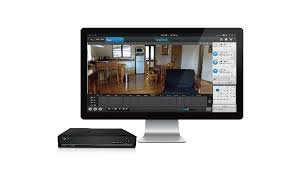VLAN Explained
VLAN Explained
A Virtual Local Area Network (VLAN) is a way to segment a physical Local Area Network (LAN) into multiple logical networks. This allows you to create separate broadcast domains on a single switch, which can improve security, network performance, and manageability.
Here are some key benefits of using VLANs:
Security: VLANs can isolate traffic between different departments or user groups, preventing unauthorized access to sensitive data.
Performance: By segmenting traffic, VLANs can reduce congestion on the network, which can improve overall performance.
Manageability: VLANs can simplify network management by making it easier to control and troubleshoot network problems.
There are a few different ways to configure VLANs, but they typically involve assigning a VLAN ID to switch ports. Devices connected to ports with the same VLAN ID can communicate with each other, but they cannot communicate with devices on other VLANs unless there is a router configured to route traffic between them.
If you're interested in learning more about VLANs, here are a couple of resources that you might find helpful:
What is VLAN and how it works: A brief Introduction to VLANs
Virtual Local Area Networks (VLANs)
Access mode and Trunk mode
Access mode and trunk mode are two ways to configure switch ports in relation to Virtual Local Area Networks (VLANs). They determine how the port handles traffic and interacts with VLANs.
Access Mode:
Used for connecting end devices like PCs, printers, or servers to the network.
Belongs to only one VLAN.
Forwards frames in their original format without any VLAN tags.
Simpler to configure and manage.
Provides basic security by isolating traffic on a single VLAN.
Trunk Mode:
Used for connecting switches together or connecting a switch to a router (often in a "router on a stick" configuration).
Can carry traffic for multiple VLANs on a single physical link.
Differentiates VLANs by adding a tag (802.1Q) to the packet header on outgoing traffic.
Requires compatible devices on both ends of the connection (both switches need to understand trunking protocols).
More complex to configure but offers flexibility for carrying multiple VLANs.
Here's a table summarizing the key differences:
Feature Access Mode Trunk Mode
VLAN Membership Single VLAN Multiple VLANs
Traffic Handling Untagged frames Tagged frames (802.1Q)
Use Case End devices Switch to switch, switch to router
Security Basic isolation Requires additional configuration
Complexity Simpler More complex
Choosing the Right Mode:
In most cases, you'll use access mode for ports connecting to end devices like desktops or printers.
Use trunk mode for connections between switches or between a switch and a router when you need to carry traffic for multiple VLANs across a single link.
Types of VLAN
There are two main ways to categorize VLANs: by their implementation method and by their functional purpose.
By Implementation Method:
These VLANs are defined based on how devices are assigned to a specific VLAN.
Port-Based VLANs: The simplest and most common type. VLAN membership is determined by the switch port a device is connected to. Each port is assigned to a specific VLAN, and all traffic on that port belongs to that VLAN.
MAC-Based VLANs: VLAN membership is assigned based on the device's unique Media Access Control (MAC) address. This allows for more flexibility as devices can move around the network and still be part of the same VLAN.
Protocol-Based VLANs: Membership is determined by the network protocol used by the device. This is less common but can be useful for isolating specific types of traffic, like VoIP or IP cameras.
VLAN ID Based VLANs: Not a common implementation method itself, but rather the foundation for most VLAN configurations. Each VLAN is assigned a unique VLAN ID (1-4094), which helps identify and manage traffic belonging to that VLAN.
By Functional Purpose:
These VLANs are defined based on the type of traffic they carry or the department/function they serve.
Data VLAN: Also known as User VLAN, this is the most common type and carries regular user data traffic like web browsing, email, and file sharing.
Management VLAN: Used for isolating network management traffic from user traffic. This improves security and prevents management tasks from impacting overall network performance.
Voice VLAN: Dedicated for Voice over IP (VoIP) traffic. This ensures voice calls have high priority and experience minimal delays or jitter.
Guest VLAN: Provides limited network access to guests or visitors. This isolates guest traffic from the main network, protecting sensitive data.
Default VLAN: The default VLAN that untagged traffic belongs to if not explicitly assigned to another VLAN. It's best practice to keep this VLAN unused for security reasons.
Native VLAN: Applicable to trunk ports, which carry traffic for multiple VLANs. The native VLAN is the untagged VLAN for the trunk link. Ideally, this should be an unused VLAN to avoid accidental traffic leaks.
Remember, the implementation method and functional purpose can be combined to create a robust VLAN structure for your network.



Comments
Post a Comment